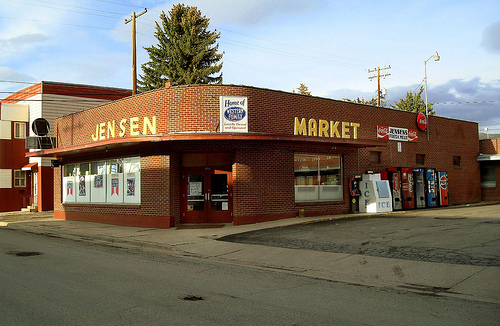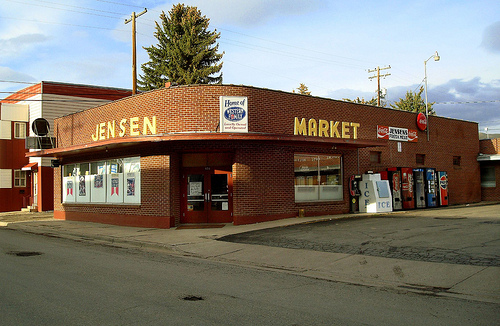 The Obama administration’s initiative to fight food deserts will help, not harm, mom-and-pop stores.Photo: arbyreedGary Nabhan and Kelly Watters are right that it will take a diversity of new and expanded fresh food stores to truly solve the crisis of inadequate access to healthy food in many low-income areas. Small grocery stores, farmers markets, and expanded convenience stores are all part of a comprehensive, sustainable solution to this challenge.
The Obama administration’s initiative to fight food deserts will help, not harm, mom-and-pop stores.Photo: arbyreedGary Nabhan and Kelly Watters are right that it will take a diversity of new and expanded fresh food stores to truly solve the crisis of inadequate access to healthy food in many low-income areas. Small grocery stores, farmers markets, and expanded convenience stores are all part of a comprehensive, sustainable solution to this challenge.
But Nabhan and Watters miss the mark significantly when they assert that the $330 million federal Healthy Food Financing Initiative (HFFI) — backed by the Obama administration and a bipartisan coalition in Congress — would attract only “full-service grocery franchises that heap upon our children megatons of empty calories.” That’s the opposite of what’s happening.
HFFI represents the federal government’s first coordinated step — with programs from the departments of Health and Human Services, Treasury, and Agriculture — to promote a wide range of interventions that expand the supply of and demand for nutritious foods, including grocery stores, small retailers, corner stores, and farmers markets, to help revitalize neighborhoods that currently lack these options.
This commitment to an array of healthy food interventions is reflected in recently issued announcements concerning available funds for different projects. For instance, as part of HFFI, the Department of Health and Human Services is highlighting “projects that finance grocery stores, farmers markets, and other retail sources that provide access to fresh nutritious foods.” The USDA is prioritizing projects that “improve infrastructure and distribution (transportation, processing, storage, and other equipment) for healthy foods in food desert communities.”
Leaders in the administration and Congress (in partnership with outside advocacy and community groups) have been diligent in figuring out what has worked — and bringing those proven policies to a national scale. The Pennsylvania Fresh Food Financing Initiative (FFFI) has served as the model for the Obama administration’s efforts. The Pennsylvania program began in 2004, taking a $30 million state investment that has now helped develop 88 new or expanded fresh food outlets, leveraged a total of $190 million in total project costs, and created or saved more than 5,000 jobs.
Every project backed by the FFFI was an independent grocer, a farmers market, a co-operative, a public market with many farmers represented, or a small corner store. And, perhaps most importantly, more than 400,000 people now have access to healthy food who didn’t before.
Take, for instance, Ha Ha’s Market in the Logan section of Philadelphia. The 900-square-foot store — opened in 1989 by the Has, a Korean immigrant family — carries fresh produce, fresh fish, and spices. The Pennsylvania program provided their market with $25,000 in grant funding to renovate their refrigeration units, repair their HVAC equipment, purchase a much-needed new ice machine, and expand their store to increase the fresh food options available. Sales at Ha Ha’s market have tripled since these improvements were made.
Even in neighborhoods where a large, full-service grocer is needed, independent operators have been the primary beneficiaries of the Pennsylvania program. In North Philadelphia, Progress Plaza – the nation’s oldest African-American-owned shopping center — used support from the state and the FFFI ($250,000 in grant funding for predevelopment costs for the supermarket and an additional $2.3 million in loans for renovations, equipment, security, and training) to launch a major redevelopment effort centered around a new 46,000-square-foot Fresh Grocer store that will provide full-service groceries and 240 jobs.
Indeed, it is independently owned stores that are most able to flexibly meet the needs and desires of a community. But too often these stores cannot move forward without the assistance of one-time loan and grant financing.
Pennsylvania’s program is one of the most promising efforts we have seen to bring fresh food to underserved communities. That’s why California, Colorado, Illinois, New Jersey, New York, and New Orleans all have similar programs in the works or already running.
Nabhan and Watters raised some critical considerations as the federal effort moves forward. But Pennsylvania already blazed the path to a truly community-responsive, sustainable solution to the crisis of fresh food access. The federal government is wise to follow.



